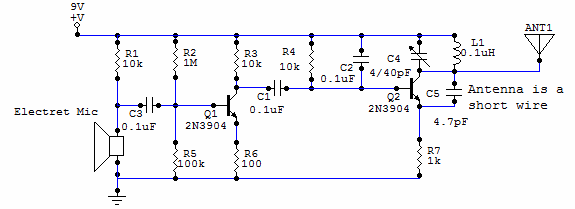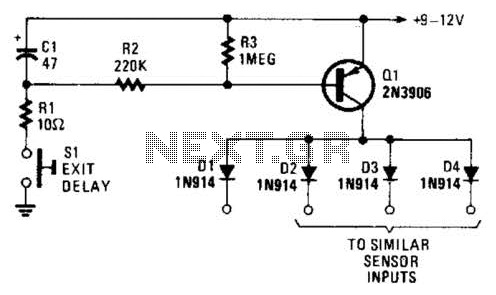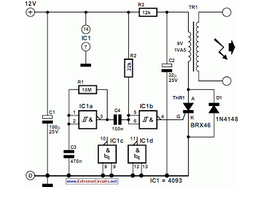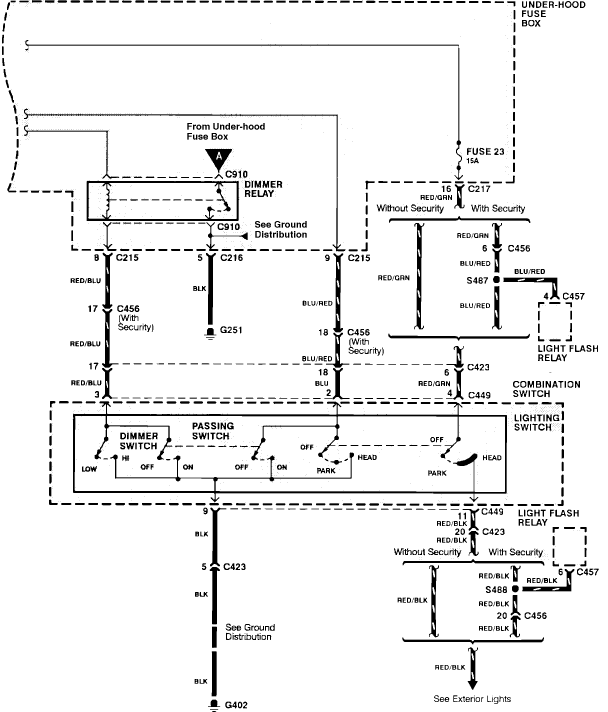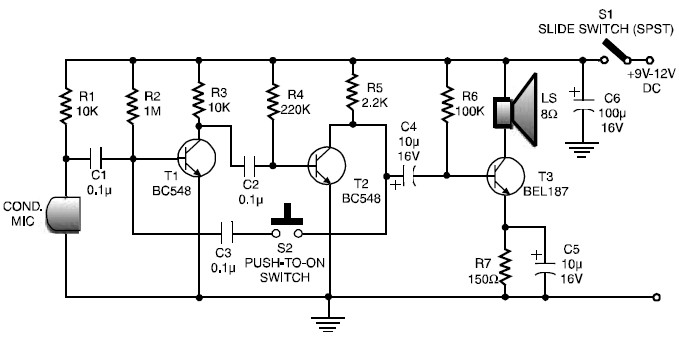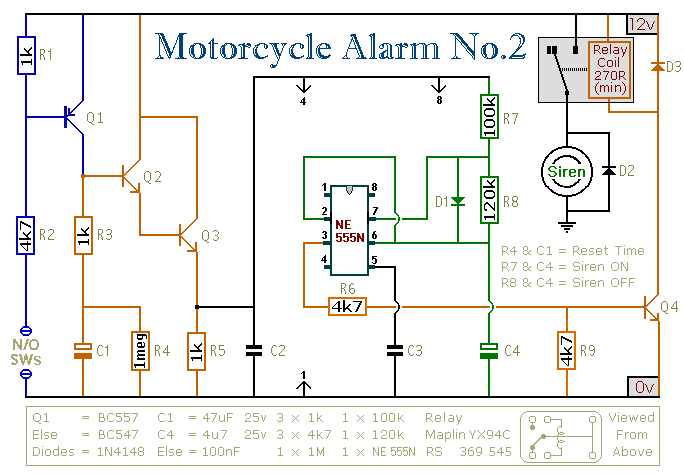
Two Simple Relay Based Motorcycle Alarms
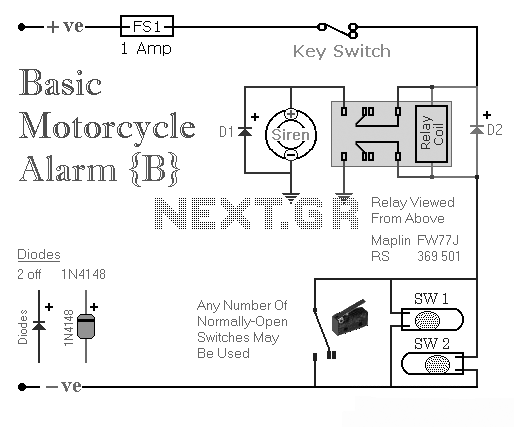
Two simple relay-based motorcycle alarm circuits. These are easy to build and can be used to protect motorcycles, but they also have many other applications. If relays with 6-volt coils are used...
The motorcycle alarm circuits described consist of two basic relay configurations designed to provide a security solution for motorcycles. Each circuit utilizes relays, which are electromechanical switches, to control the alarm system's response to unauthorized access or tampering.
The first circuit typically includes a single relay that activates an alarm sound when the motorcycle is disturbed. The relay is triggered by a switch, which can be a tilt sensor or a motion sensor, depending on the desired sensitivity. When the sensor detects movement, it closes the circuit, energizing the relay coil. This action allows current to flow through the alarm system, producing a loud sound to deter potential thieves. The use of a 6-volt relay is advantageous, as it allows for compatibility with many motorcycle electrical systems while ensuring low power consumption.
The second circuit may incorporate a dual relay setup, providing additional features such as a flashing light indicator alongside the alarm sound. In this configuration, the first relay activates the alarm, while the second relay controls a visual alert, such as an LED or a small light bulb. This dual-action response enhances the motorcycle's security by attracting attention through both sound and light, thereby increasing the likelihood of deterring theft.
Both circuits can be powered by the motorcycle's existing electrical system, typically drawing from the battery. Proper design considerations should include the selection of appropriate relay ratings to handle the load of the alarm and any additional components. Additionally, the placement of sensors should be strategic to maximize detection sensitivity while minimizing false alarms.
These relay-based alarm circuits are versatile and can be adapted for various applications beyond motorcycles, including home security systems, automotive applications, or any scenario where a simple alarm system is needed. With careful assembly and component selection, these circuits provide a reliable and effective means of enhancing security.Two Simple Relay Based Motorcycle Alarms Circuit These are two - easy to build - relay-based alarms. You can use them to protect your motorcycle - but they have many more applications. If you use relays with 6-volt coils - they`.. 🔗 External reference
The motorcycle alarm circuits described consist of two basic relay configurations designed to provide a security solution for motorcycles. Each circuit utilizes relays, which are electromechanical switches, to control the alarm system's response to unauthorized access or tampering.
The first circuit typically includes a single relay that activates an alarm sound when the motorcycle is disturbed. The relay is triggered by a switch, which can be a tilt sensor or a motion sensor, depending on the desired sensitivity. When the sensor detects movement, it closes the circuit, energizing the relay coil. This action allows current to flow through the alarm system, producing a loud sound to deter potential thieves. The use of a 6-volt relay is advantageous, as it allows for compatibility with many motorcycle electrical systems while ensuring low power consumption.
The second circuit may incorporate a dual relay setup, providing additional features such as a flashing light indicator alongside the alarm sound. In this configuration, the first relay activates the alarm, while the second relay controls a visual alert, such as an LED or a small light bulb. This dual-action response enhances the motorcycle's security by attracting attention through both sound and light, thereby increasing the likelihood of deterring theft.
Both circuits can be powered by the motorcycle's existing electrical system, typically drawing from the battery. Proper design considerations should include the selection of appropriate relay ratings to handle the load of the alarm and any additional components. Additionally, the placement of sensors should be strategic to maximize detection sensitivity while minimizing false alarms.
These relay-based alarm circuits are versatile and can be adapted for various applications beyond motorcycles, including home security systems, automotive applications, or any scenario where a simple alarm system is needed. With careful assembly and component selection, these circuits provide a reliable and effective means of enhancing security.Two Simple Relay Based Motorcycle Alarms Circuit These are two - easy to build - relay-based alarms. You can use them to protect your motorcycle - but they have many more applications. If you use relays with 6-volt coils - they`.. 🔗 External reference
